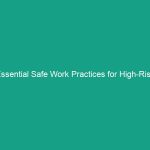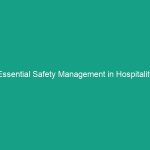Introduction
Good morning team,
Today, we’re diving into a crucial topic: Calibration of Safety Equipment for Accurate Gas Detection. Understanding and implementing proper calibration practices is essential for ensuring our Safety while working in environments where gas exposure could be a risk. Accurate gas detection plays a vital role in protecting our health and safety, and today, we will discuss why it is important and how we can effectively manage it.
Understanding Calibration of Safety Equipment
Calibration is the process of adjusting and verifying the accuracy of safety equipment used for gas detection. This ensures that the equipment can accurately measure the concentration of hazardous gases in the Environment. Proper calibration is critical because inaccurate readings can lead to dangerous situations, such as undetected gas leaks or false alarms.
Many employees might think that once gas detection equipment is purchased, it doesn’t require regular checks. However, this is a common misconception. Environmental factors, wear and tear, and equipment age can all affect accuracy, making regular calibration a necessity.
Key Hazards, Risks, and Safety Considerations
The risks associated with improper calibration of gas detection equipment can be severe. Here are some key Hazards to consider:
- Undetected Gas Leaks: Inaccurate readings can result in gas leaks going unnoticed, leading to potential explosions or toxic exposures.
- False Sense of Security: Employees may feel safe due to equipment that is not functioning properly, putting them at risk.
- Regulatory Non-Compliance: Failure to calibrate can lead to violations of safety Regulations, resulting in fines and increased liability.
In real-world scenarios, there have been incidents where faulty gas detection equipment led to accidents, highlighting the importance of stringent calibration protocols.
Best Practices, Procedures, & Actionable Advice
To ensure the accuracy of gas detection equipment, follow these Best Practices:
- Regular Calibration Schedule: Establish a routine calibration schedule based on manufacturer recommendations and usage frequency. Typically, calibration should occur at least once every six months.
- Use Certified Calibration Gases: Always use gases that are certified for calibration purposes. This guarantees the accuracy of the calibration process.
- Document Calibration Procedures: Keep detailed records of calibration dates, results, and any Maintenance performed on the equipment. This documentation can be crucial for compliance audits.
- Train Employees: Ensure all employees understand the importance of calibration and are trained in how to perform it properly.
- Visual and Functional Checks: Conduct daily checks to ensure that the equipment is functioning correctly before use. Look for any signs of damage or wear.
For instance, a manufacturing facility recently experienced an incident where a gas detector failed to alert workers of a harmful gas leak due to improper calibration. The situation could have been avoided if regular checks had been conducted.
Regulations, Standards, and Compliance
It’s vital to understand the regulations surrounding gas detection equipment. In the United States, OSHA (Occupational Safety and Health Administration) provides guidelines that outline the requirements for gas detection systems. Similarly, ISO (International Organization for Standardization) standards recommend calibration practices to ensure the reliability of safety equipment.
Compliance with these regulations not only protects employees but also minimizes the liability for the company. Regular audits and adherence to safety Standards can help maintain a safe work environment and avoid legal repercussions.
Employee Engagement & Discussion
Let’s take a moment to reflect on our experiences. Have any of you encountered issues related to gas detection equipment in the past? What safety challenges have you faced regarding calibration? Sharing our experiences can help us learn from each other and improve our safety practices.
Conclusion & Key Takeaways
In conclusion, the calibration of safety equipment for accurate gas detection is not just a routine task; it is a critical component of our Workplace Safety strategy. By adhering to Best Practices, understanding the risks, and ensuring compliance with regulations, we can create a safer work environment for everyone.
Remember, safety is everyone’s responsibility. Let’s prioritize these practices and ensure that we are all protected while on the job. Thank you for your attention and commitment to safety!


